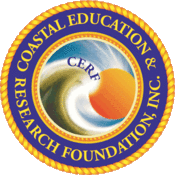Efficacy of Mitigation Planting Requirements for Lake Shore Zone Developments in Austin, Texas, U.S.A.
ABSTRACT
Bellinger, B.J.; Clamann, A., and Reinhard, M., 0000. Efficacy of mitigation planting requirements for lake shore zone developments in Austin, Texas, U.S.A.
The conversion of natural vegetation along lake riparian, shoreline, and littoral zones (collectively referred to as the “shore zone”) to turf grass lawns along with construction of docks, beaches, and revetments can significantly degrade environmental benefits provided by the shore zone. Some regional authorities and municipalities, such as the City of Austin, Texas, have implemented regulations requiring preservation or mitigation of shore zone vegetation communities to reduce the negative influences of anthropogenic development. However, few studies have explicitly evaluated the efficacy of such regulations. This study evaluated the success of required mitigation plantings for developments within the shore zone of Lake Austin, a municipal reservoir surrounded by single-family residences. Results indicate that most sites (51%) had few, if any, of the quantity or diversity of plant species that were required per their site plan, and fewer than 10% exceeded the minimum requirements after final inspection and release of the completed development project. These findings suggest that current regulations and enforcement practices are insufficient to protect and maintain shore zone integrity and therefore its ecosystem services (e.g., faunal habitat, water-quality protection). As lake and river ecological integrity continues to be threatened by anthropogenic activities, it will be imperative for regulating authorities to evaluate the efficacy of development regulations intended to protect shore zone habitats.
Contributor Notes

